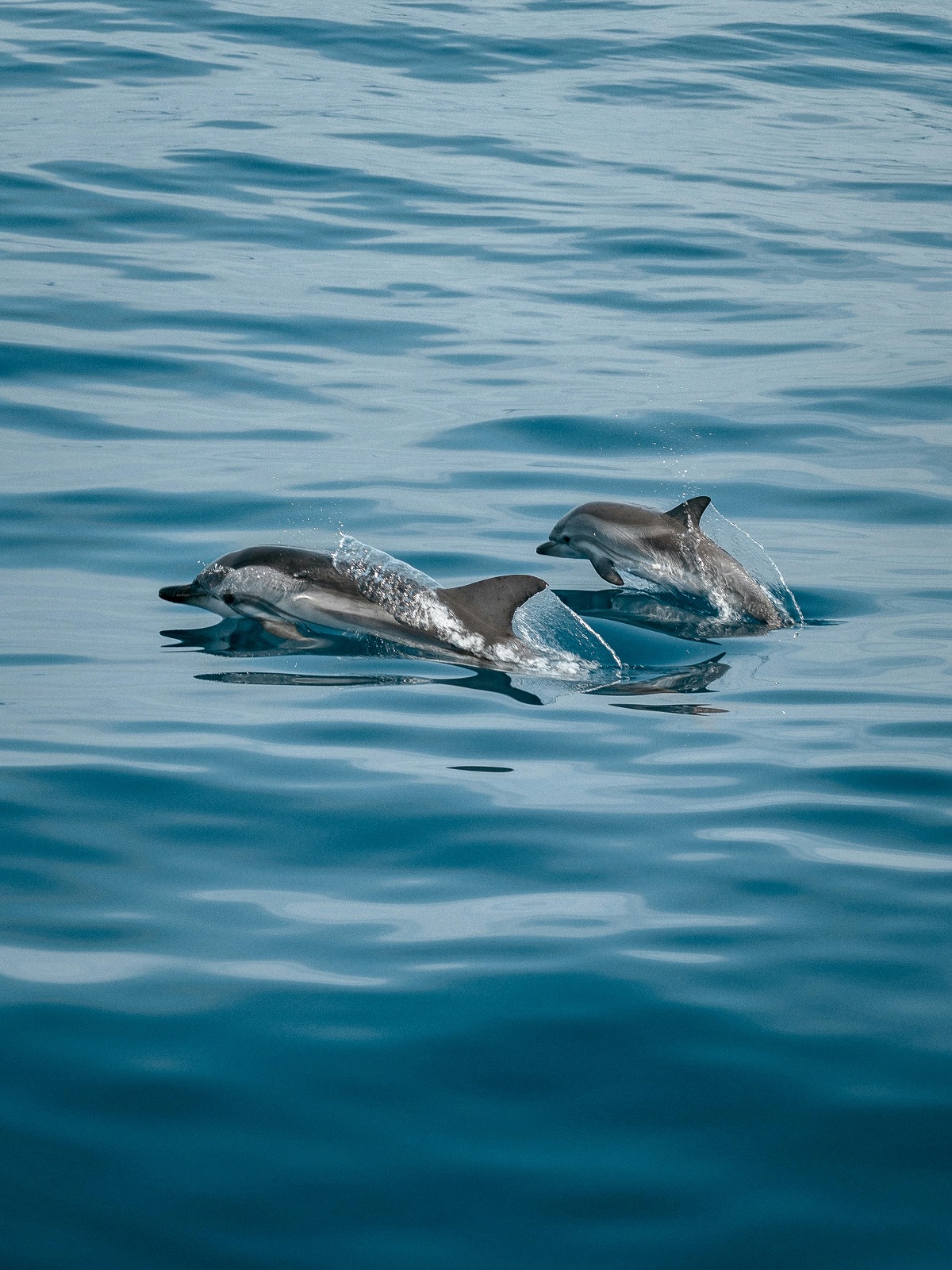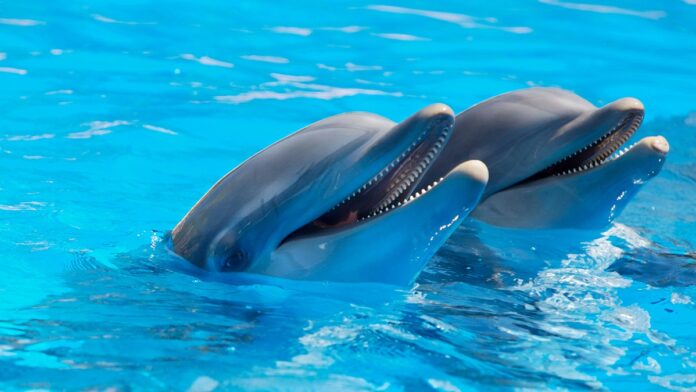Bottlenose dolphins (Tursiops truncatus) are undoubtedly among the most captivating creatures inhabiting our planet’s oceans. These highly intelligent marine mammals have fascinated humans for centuries with their remarkable cognitive abilities, complex social structures, and playful behaviors. Found in warm and temperate seas around the globe, bottlenose dolphins serve as important indicators of ocean health while simultaneously capturing our imagination through their seemingly joyful existence.
Physical Characteristics

The bottlenose dolphin possesses a remarkably streamlined body that exemplifies perfect hydrodynamic design. Their torpedo-shaped form, powerful tail flukes, and specially adapted skin allow these marine acrobats to reach impressive speeds of up to 20 miles per hour when chasing prey or playing. The species derives its common name from its distinctive short, thick beak that resembles the neck of a bottle, a feature that sets it apart from other dolphin species.
These magnificent creatures typically measure between 6 to 13 feet in length when fully grown, with males generally being slightly larger than their female counterparts. Their weight can vary dramatically depending on habitat and available food sources, ranging from a modest 300 pounds in some coastal populations to an impressive 1,400 pounds for larger offshore varieties. The dolphin’s coloration follows a countershading pattern common among marine animals – dark gray on the dorsal side that gradually lightens to a soft white or pinkish hue on the belly, providing effective camouflage from both predators below and prey above.
Several specialized physical adaptations contribute to the bottlenose dolphin’s success as a marine predator:
Blubber Layer: A thick insulating fat layer helps maintain body temperature in varying water conditions
Echolocation System: Their bulbous forehead (melon) contains specialized fat deposits that focus sound waves for navigation and hunting
Respiratory Efficiency: A single blowhole on top of the head allows for quick, efficient breathing at the surface
Flexible Spine: Enables dramatic leaps and acrobatic maneuvers
Sensitive Skin: Constantly shedding outer skin layers reduces drag and prevents parasite buildup
Global Distribution and Habitat Preferences
Bottlenose dolphins demonstrate remarkable adaptability to various marine environments, resulting in one of the most extensive distributions of any cetacean species. These cosmopolitan mammals inhabit both coastal and offshore waters throughout tropical and temperate oceans worldwide, with populations thriving in remarkably diverse habitats ranging from shallow estuaries to deep oceanic waters.
Coastal populations tend to favor bays, lagoons, harbors, and estuaries where food is abundant and water temperatures remain relatively stable. These inshore dolphins often develop strong site fidelity, remaining within a defined home range throughout their lives. In contrast, offshore varieties typically inhabit deeper waters beyond the continental shelf, following migratory fish populations across vast distances and diving to impressive depths in search of prey.
Notable population centers exist in:
The coastal waters of Florida and the Gulf of Mexico
The Mediterranean Sea
The waters surrounding the United Kingdom and Ireland
Southern Australia and New Zealand
The coastal regions of South Africa
The Indian Ocean near the Maldives and Sri Lanka
The species’ ability to thrive in such varied environments speaks to their extraordinary behavioral flexibility and intelligence. Some populations have even adapted to unique ecological niches, such as the cooperative fishing relationship between dolphins and humans in Laguna, Brazil, where the marine mammals help drive fish into fishermen’s nets.
Complex Social Structures and Communication
The social world of bottlenose dolphins rivals that of primates in its complexity and sophistication. These highly gregarious creatures form dynamic social networks organized around a fission-fusion model, where group composition changes frequently throughout the day as individuals join and separate from various subgroups. This fluid social structure allows for complex relationships to develop within the larger community.
Pod sizes can vary dramatically depending on habitat and resource availability. Coastal groups typically number between 2-15 individuals, while offshore pods may include hundreds of dolphins traveling together. Within these groups, researchers have identified several distinct social categories:
Nursery Groups: Mothers with calves often associate together for protection
Juvenile Groups: Young dolphins form playful alliances while learning critical skills
Male Alliances: Particularly strong bonds between males that can last decades
Mixed Groups: Temporary associations for feeding or socializing
Dolphin communication represents one of the most sophisticated non-human language systems in the animal kingdom. Their vocal repertoire includes:
Signature Whistles: Unique to each individual, functioning like names
Echolocation Clicks: Used for navigation and hunting
Burst Pulse Sounds: Convey emotional states and social information
Body Language: Leaping, tail slapping, and synchronized movements
Recent research suggests that dolphins may even use something resembling grammar in their communication, combining different sounds in specific sequences to convey complex information. Their ability to understand symbolic language and follow complex instructions in captivity demonstrates their remarkable cognitive abilities.
Feeding Strategies and Dietary Preferences
As opportunistic predators, bottlenose dolphins employ an impressive array of hunting techniques tailored to their specific environment and available prey. Their diet primarily consists of various fish and cephalopod species, with exact preferences varying by location. Common prey items include mullet, mackerel, herring, squid, and octopus, with an adult dolphin consuming 15-30 pounds of food daily to maintain its high metabolism.
Coastal populations often develop specialized hunting methods passed down through generations:
Mud Ring Feeding: Dolphins in Florida create circular mud nets to trap fish
Strand Feeding: Some groups chase fish onto muddy banks and temporarily beach themselves
Sponge Carrying: Certain females protect their rostrums with marine sponges while foraging
Corral Fishing: Groups work together to herd fish into tight bait balls
Offshore dolphins typically hunt in deeper waters, using echolocation to locate scattered prey. These populations often dive to depths of 300-500 feet, holding their breath for up to 7-8 minutes during foraging expeditions. Some offshore groups have been observed coordinating with tuna to corral fish schools, a remarkable example of interspecies cooperation.
The dolphins’ conical teeth (18-28 per jaw) aren’t used for chewing but rather for gripping slippery prey, which is swallowed whole. Their sophisticated echolocation allows them to detect fish buried in sand and even determine size and species before attacking. This biological sonar system is so precise that dolphins can distinguish between different types of fish based solely on their sonar reflections.
Reproduction and Life Cycle
Bottlenose dolphins exhibit a slow reproductive rate typical of long-lived, intelligent mammals. Females reach sexual maturity between 5-13 years of age, while males mature slightly later at 9-14 years. The species follows a polygynous mating system where males compete for access to females through elaborate courtship displays and sometimes aggressive interactions with rivals.
The reproductive cycle includes several fascinating aspects:
Courtship Rituals: Males may present gifts, perform synchronized swimming, or use gentle biting to attract mates
Gestation: Lasting approximately 12 months, one of the longest among marine mammals
Birth: Calves emerge tail-first to prevent drowning, weighing 30-40 pounds at birth
Nursing: Mothers produce rich milk (40-50% fat content) for 18 months to 2 years
Calf Development: Young dolphins remain dependent on their mothers for 3-6 years
Female dolphins typically give birth every 3-6 years, investing tremendous energy in raising each calf. This extended parental care allows for the transmission of complex cultural knowledge, including specialized hunting techniques and social norms unique to specific populations.
In the wild, bottlenose dolphins can live 40-50 years, with some females in captivity reaching nearly 60. Their longevity, combined with strong mother-calf bonds, creates multigenerational family structures where knowledge and traditions pass from elders to younger group members.
Guardians of Ocean Intelligence
Bottlenose dolphins represent one of the most extraordinary examples of evolutionary adaptation and intelligence in the animal kingdom. Their complex social networks, sophisticated communication systems, and remarkable problem-solving abilities continue to astonish researchers and delight observers worldwide.
Diving Into the World of Moorish Idols: The Ocean’s Distinct Beauties

